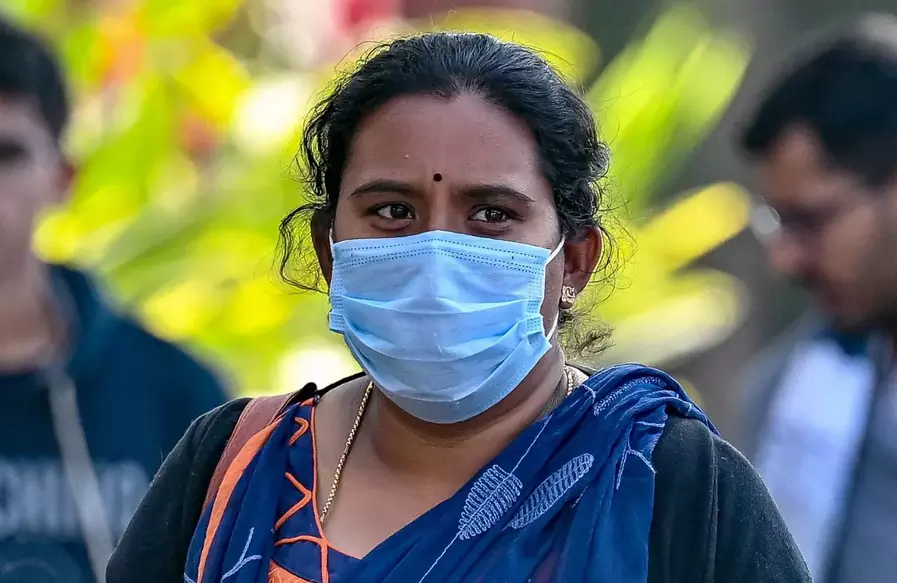
Tirupati: A silent killer is on the prowl. Healthcare professionals notice a sharp increase in the number of women suffering from chronic respiratory illnesses linked to indoor air pollution.
Based on a recent study, doctors at the Pulmonology department of SVR Ruia Government General Hospital reported an uptick in cases linked to routine domestic practices, including the burning of incense, use of camphor in closed rooms and poor ventilation.
Hospital data show as many as 3,802 outpatients and 472 in patients were treated for respiratory illnesses in January and February this year alone, with women accounting for nearly 20 to 30 per cent of these cases.
According to Dr S Subba Rao, head of the Pulmonology department, such a trend was previously noticed among men. Now, there has been a steady rise in such cases among women. “We are seeing more women coming in with symptoms related to prolonged exposure to indoor smoke and poor ventilation,” he said.
Previously, the reason for respiratory illness was attributed to occupational exposure or smoking among men. Now, this is inreasingly getting reported from homemakers and elderly women.
One such patient, Yamini, is a resident of Tirupati. She experienced chronic breathing difficulties. On examination, doctors linked her condition to daily rituals involving incense and camphor in a sealed prayer room. “Lighting these items in an unventilated space causes a build-up of thick smoke. Continued inhalation leads to chronic respiratory distress,” said the attending physician.
Another patient, Sunitha from Tirupati rural, reported similar symptoms that were finally traced to a minor gas leak and inadequate ventilation in her kitchen. She was advised to improve airflow and install an exhaust fan.
Dr Rao attributed the surge to indoor environmental exposures that are often overlooked. “We are seeing more cases from households using biomass fuel, or having poor cooking environments or inadequate ventilation. Combined with dust and smoke exposure, these conditions are worsening lung health,” he stated.
Contributing factors include longer female life expectancy and associated chronic conditions, as well as passive smoking, unclean air conditioner filters, processed food consumption, and sedentary lifestyles. “These issues collectively increase susceptibility to chronic respiratory disease. However, rising awareness and early diagnosis can make a difference,” Subba Rao said.
Experts also warn of the impact of commonly used puja materials. Burning a single incense stick in a closed space can raise PM2.5 levels to 45–60 micrograms per cubic metre, exceeding the national permissible 24-hour limit of 40 micrograms, noted D Hari, a retired chemistry professor from Vels institute, Chennai.
“Incense, camphor, and biomass fuels emit pollutants like benzene, formaldehyde and ultrafine particles. Prolonged exposure in confined spaces can trigger asthma, allergic rhinitis, and bronchitis,” he said.
A paper in the National Journal of Community Medicine linked long-term incense exposure to reduced lung function and persistent cough. Another study in ‘Lung India’ reported that women exposed to incense smoke for over 10 years showed significant declines in FEV1 and Forced vital capacity (FVC), increasing their risk for COPD and other chronic lung diseases.
Formaldehyde levels from camphor burning can range between 30 and 50 parts per billion (ppb), far above the WHO’s recommended limit of 10 ppb, Hari noted. “Ultrafine particles can reach deep into lung tissue and cause inflammation, particularly in poorly ventilated spaces.”
Subba Rao advised regular Pulmonary Function Tests for individuals above 40, especially those with a history of asthma or TB. He recommended improved airflow in kitchens and puja rooms, regular cleaning of AC filters, use of quality incense, and reducing vehicle emissions. “Indoor air pollution is a growing concern. Small changes in daily habits can significantly reduce the burden of respiratory disease,” he said.






